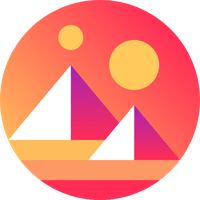What is Decentraland (MANA)?

Hire Arrive
Cryptocurrency
about 1 year ago

Decentraland (MANA) is a decentralized virtual reality (VR) platform built on the Ethereum blockchain. Unlike centralized virtual worlds like Roblox or Fortnite, Decentraland is owned and governed by its users, offering a unique blend of digital ownership, community building, and potential for economic activity within a persistent, 3D virtual world. This article will explore what Decentraland is, how it works, its potential, and its limitations.
Ownership and Governance:
The core of Decentraland's appeal lies in its decentralized nature. The virtual world is composed of parcels of land represented as non-fungible tokens (NFTs). Users can buy, sell, and trade these land parcels on the Decentraland marketplace. This ownership extends beyond just visual aesthetics; owners can develop and customize their land, creating unique experiences, games, and applications within their virtual properties.
Decentraland's governance is also decentralized, relying on a DAO (Decentralized Autonomous Organization). MANA token holders can vote on proposals affecting the platform's development and direction. This gives the community a direct say in shaping the future of the metaverse.
MANA Token:
MANA is the native cryptocurrency of Decentraland. It serves several crucial functions:
* Land Purchase: MANA is used to purchase and trade land parcels within Decentraland. * In-world Transactions: It acts as the primary currency for conducting transactions within the platform, such as buying virtual goods, services, and experiences. * Governance: MANA holders have voting rights in the Decentraland DAO, allowing them to influence the platform's development. * Staking: Users can stake their MANA tokens to earn rewards and participate in the platform's governance.
Experiences and Applications:
Decentraland boasts a diverse range of user-created experiences and applications. Users can explore virtual galleries showcasing digital art, attend virtual concerts and events, play games, and engage in various social interactions. The possibilities are vast, limited only by the creativity of its users and developers. Some examples include:
* Virtual Galleries: Showcasing NFTs and digital art. * Decentralized Applications (dApps): Offering unique services and functionalities within the platform. * Gaming Experiences: Providing interactive games and entertainment. * Virtual Events: Hosting conferences, concerts, and other events.
Potential and Limitations:
Decentraland's potential is significant. Its decentralized nature fosters innovation, community ownership, and potentially a more equitable and transparent virtual world. The ability to own and monetize digital assets opens up exciting possibilities for creators and entrepreneurs.
However, Decentraland also faces challenges:
* Accessibility: The technical aspects of interacting with Decentraland can be challenging for newcomers. * Scalability: The Ethereum blockchain's limitations can impact the platform's scalability and transaction speeds. * User Adoption: Wider user adoption is crucial for Decentraland's long-term success. * Volatility: The price of MANA, like other cryptocurrencies, is highly volatile.
Conclusion:
Decentraland represents a significant step towards a truly decentralized metaverse. While it faces challenges, its innovative approach to digital ownership, community governance, and diverse applications make it a compelling platform to watch. Its success will depend on continued development, wider user adoption, and the ability to overcome the limitations of its underlying blockchain technology. Whether you're a crypto enthusiast, a metaverse explorer, or simply curious about the future of the internet, Decentraland offers a fascinating glimpse into the possibilities of a decentralized digital world.